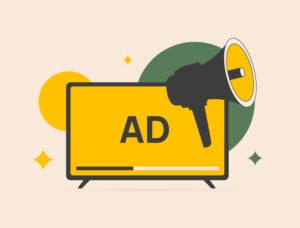With over two billion users on Facebook each month and 500 million “Instagrammers” every day, Facebook and its affiliate platforms are increasingly becoming the most sought after platforms to advertise and connect with an audience through paid digital media. However, in recent months, there have been a number of changes to Facebook’s advertising platform and political advertising sector to protect user’s privacy, prevent election altering “fake ads” and revert back to its user geared roots.
Here are five things that have changed in the last five months:
Newsfeed Optimization
Facebook is returning to its roots. In their words, they will be getting back to “what made Facebook good in the first place – friends.”
Standard articles or text posts will no longer have the same priority in Facebook’s newsfeed algorithm, as the changes to Facebook’s advertising platform is progressively moving towards content that is something your friend posted, or at least looks and feels like your friend posted it. Meaning, personal photos and selfies, videos and Facebook Lives will be put in front of more eyeballs for more extended periods of time, than more static content.
Now, this isn’t saying that political candidates/organizations should no longer look to Facebook as a useful or primary outreach tool, but it does mean that we should change how we reach our audience there. Instead of posting a link to an op-ed about your policy stance, host a Q&A on Facebook live or post a short video about your campaign. It’s more interactive and will almost always get more likes, comments, and shares. (See our previous blog for five best practices for creating a digital campaign videos)
Political Authorization
To combat last election cycle’s “fake news” and Russian hackers, Facebook is now requiring all political or advocacy organizers to become authorized to serve political ads.
Every political ad served must now have a “Paid for by” disclaimer linking their page to their ad account. In addition, advertisers also have to verify their identity and residential location before being permitted to serve ads.
The process can take upwards of two weeks, so be sure to complete it as soon as possible so you can serve ads just in time for Election Day.
Political Ad Archive
In conjunction with their new Political Authorization process, Facebook launched its Political Ad Archive. The ad archive houses ads served after May 7, 2018 about elected officials, candidates for office, and issues of national importance and will be stored for up to seven years.
By simply searching a candidate’s name or an issue, you’ll be able to see an approximation of who the ad was served to, where it was served, and for how much.
It can be a useful tool to track the ads from your opposition or see what fellow like-minded organizations are running for their ads.
Audience Targeting
To protect user data and privacy, Facebook removed all third-party data from its advertising platform. While it is still reasonably easy to advertise and create audiences on Facebook, we now have less assurance that we are reaching the correct people, like registered voters, using their targeting alone.
As an alternative, Facebook allows advertisers to upload their own audience lists and will match it to users on Facebook. If you did some phone banking or canvassing and want to make sure that you are reaching out to those voters again through a digital media platform, upload the contact data you collected and create ads to compliment to your GOTV field campaign.
Always remember the broader the list, the better. Facebook advertising works better and costs less per result when lists are larger and less constrained.
Brand Lift Studies
Just this month, Facebook rolled out the ability to run self-serve brand lift tests at a fraction of the previous cost. Through its “Test and Learn” sector, users can create questions, gather data to analyze, and find the best ways to improve their advertising based on brand recognition and recall.
The new self-serve brand lift tests allow users to choose three of the most commonly used polling question, and after 250 responses will have real-time access to the brand lift results.
Facebook campaigns that spend a minimum of $30,000 can create a brand lift study as an added value to their ad run. Previously only campaigns that spent a minimum of $80,000 had access to this helpful tool.
For more insights on political advertising and community organizing/outreach on Facebook, you can visit their Government, Politics, and Advocacy Website, https://politics.fb.com/, or email our team at [email protected].




